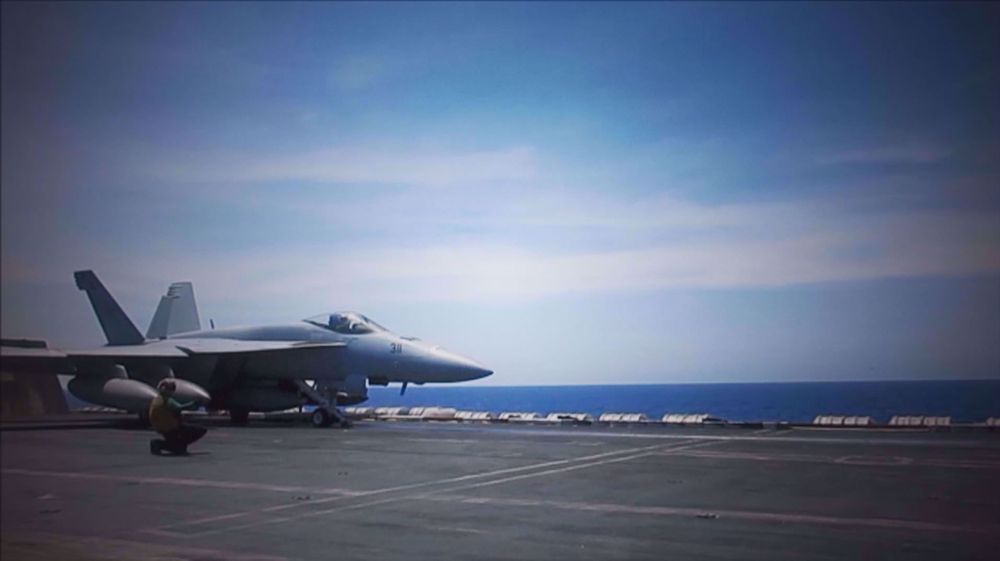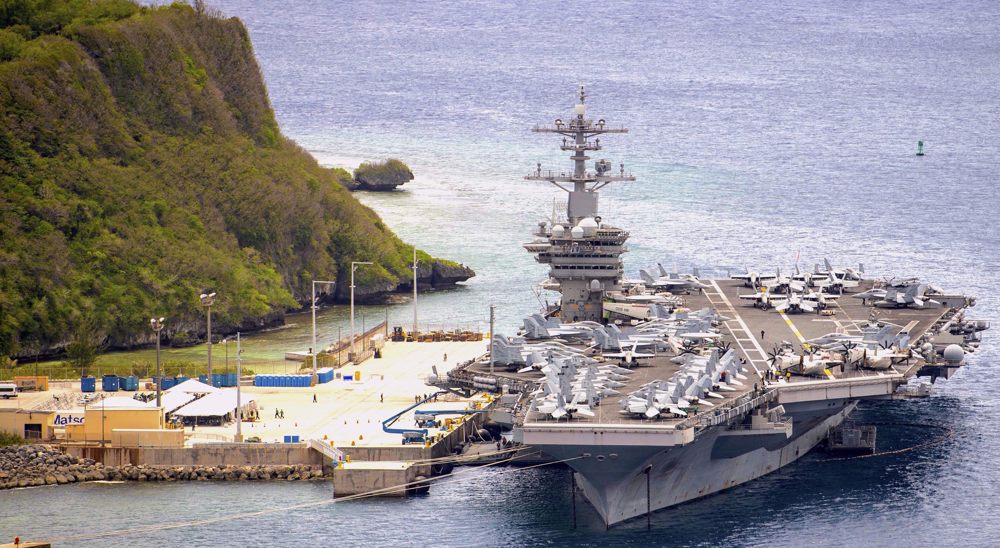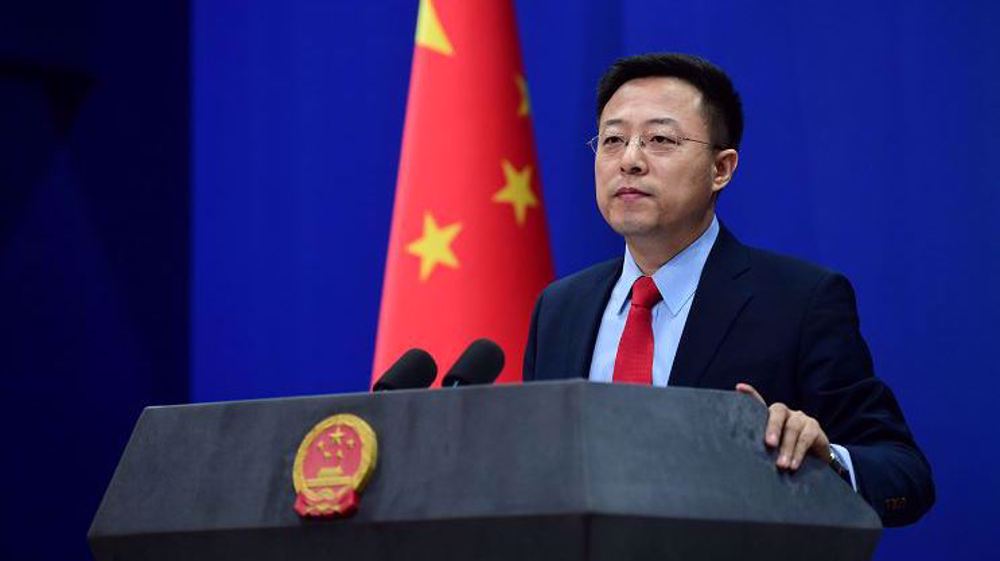US protests to China in own backyard as Biden pivots to Asia
The US military has protested to Chinese military activities in the South China Sea as leading policy outlet Politico says the new Biden government is reorienting foreign policy priorities to China and Asia from the Middle East.
The US Indo-Pacific Command (INDOPACOM) said in a statement on Friday that Chinese military flights in the South China Sea over the past week fit a pattern of destabilizing and aggressive behavior by Beijing.
"The Theodore Roosevelt Carrier Strike Group closely monitored all People’s Liberation Army Navy (PLAN) and Air Force (PLAAF) activity, and at no time did they pose a threat to US Navy ships, aircraft, or Sailors," INDOPACOM spokesperson Navy Capt. Mike Kafka said.
Such actions, he said, reflected a China’s attempt to use its military as a “tool to intimidate or coerce” those operating in international waters and airspace.
The INDOPACOM spokesperson also said the United States would continue to fly, sail and operate in the South China Sea.
“The US has a persistent military presence and routinely operates throughout the Indo-Pacific, including the waters and airspace surrounding the South China Sea and East China Sea, just as we have approached the region for the past 240 years,” he said.
China, which has long geared its military towards defending itself against the United States, recently conducted exercises that would simulate an operation against an aircraft carrier, according to the sources.
"They purposely conducted the drills when the US carrier was passing through the Bashi Channel," one source said, referring to the waterway between southern Taiwan and the northern Philippines.
"China is trying to tackle the issue of the South China Sea; it wants to stop the US military from entering the South China Sea. China wants to diminish the United States' weight in the western Pacific."
The South China Sea is a gateway to major sea routes, through which about 3.4 trillion dollars’ worth of trade passes each year. China claims sovereignty over much of the strategic waterway and has since 2014 built artificial islands on reefs and installed military bases on them.
The United States routinely sends warships and warplanes to the South China Sea to assert what it calls its right to freedom of navigation, ratcheting up tensions among the regional countries.
China has constantly warned the US against its military activities in the sea, saying that potential close military encounters between the air and naval forces of the two countries in the region could trigger accidents.
US B-52 bombers return to Indo-Pacific after three years
On Friday, four US B-52 bombers returned to a base in Guam after a three-year absence, aiming to conduct military missions in the Indo-Pacific region.
"Four US Air Force B-52H Stratofortress bombers returned to the Indo-Pacific region Jan 28 for a Bomber Task Force deployment, conducting operations out of Andersen Air Force Base, Guam," the Andersen Air Force Base said in a press release.
The bombers will participate in "strategic deterrence missions" with various US allies and partners in the Indo-Pacific region to counter China.
US B-52 bombers were last deployed to Guam in December 2018.
Shift From Mideast to confronting China: Report
In a report on Friday, American news website Politico said the newly-inaugurated administration of US President Joe Biden has reoriented its foreign policy priorities with a new focus on China and Asia.
It said National Security Adviser Jake Sullivan has reduced the number of staff working on the Middle East and expanded a unit that focuses on policy towards the region that stretches from the Indian Ocean to the Pacific.
Politico said the changes essentially flip the structure of the Obama-era National Security Council (NSC), which had only a handful of staffers working on the Asia portfolio.
"Given the structure of the NSC staff, I think they're pretty determined to stick to their affirmative priorities instead of getting sucked into the Middle East," a former Obama official told Politico, speaking on condition of anonymity.
White House Press Secretary Jen Psaki said this week that the new US administration believes their biggest security challenges will emerge from China and Russia.
"What we've seen over the last few years is that China is growing more authoritarian at home and more assertive abroad," Psaki said. "And Beijing is now challenging our security, prosperity, and values in significant ways that require a new US approach."
The US Defense Department policy chief called Beijing in 2019 the biggest long-term threat to American security.
Relations between China and the US hit their lowest point in decades, as former US President Donald Trump launched a damaging trade war with China, imposing sanctions on the country and clashing with the Asian power over a series of issues, including the South China Sea, Taiwan, Hong Kong and the cornavirus pandemic.
VIDEO | Press TV's news headlines
VIDEO | Israel plans massive separation wall in Jordan Valley
VIDEO | Human rights outcry: 110 Palestinian prisoner deaths since Ben-Gvir took office
VIDEO | Hundreds in Lyon decry repression targeting pro-Palestinian figure
VIDEO | Iran marks Mother’s Day with celebrations
UK threatened to cut ICC funding over Netanyahu arrest warrant: Prosecutor
UN says US must lift restrictions on Iranian diplomats
Beacon of justice: Hazrat Fatima Zahra’s lasting legacy in shaping women's role in society



















 This makes it easy to access the Press TV website
This makes it easy to access the Press TV website